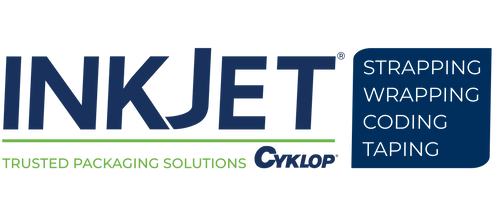QR Code Printing 101
Although “quick response” (QR) codes were first developed in 1994, they have only become widely popular in recent years. Found in restaurants, advertisements, and product packaging, QR codes enable anyone with a smartphone or QR reader to access embedded information. This information can take many forms, with some common examples being:
- Restaurant menus
- Website links
- Contact information
- Promotional deals
- Product information
Shipping companies and distribution outlets also use QR codes for real-time package updates and inventory purposes. Like conventional UPCs, QR codes enable users to automatically update shipping data with one simple scan. Compared to UPCs, however, QR codes can save and communicate much more information.
If you’re new to QR code printing or are looking to upgrade your marking process, this guide will detail some of the most important QR code printing best practices, review hardware options, and explain how to ensure coding success.
Considerations for QR Code Printing
It’s essential to consider the following factors when incorporating QR code printing into your operation.
1. Use the Right Hardware for Your Material and Workflow
QR codes can be placed on a wide range of materials with numerous machines. For QR code printing success, you must use a marking solution that is compatible with your substrate and well-suited for your output needs.
For example, restaurant or craft brewpub owners can simply print menu-linking QR codes on slips of paper with an office computer or a direct thermal label printer. However, if you run a beverage bottling line and want to place QR codes on plastic or glass bottles, you will need an industrial marking solution.
To accommodate different operations and line setups, today’s market is filled with QR code printing solutions that excel in unique ways. The most popular options include the following:
Continuous inkjet (CIJ) printers, such as the DuraCode Touchscreen, are high-speed production line printers with wide material compatibility. CIJ models like the DuraCode can print at speeds above 300 m/min. on all kinds of porous and non-porous materials.
Thermal inkjet (TIJ) printers, such as the Anser X1, are compact, lightweight printing units that offer excellent printing specs at intermediate speeds. TIJ models like the X1 can create QR codes at 600 x 600 DPI resolution, as well as lower resolution codes at speeds of up to 300 m/min. Not all TIJ printers are compatible with both porous and non-porous materials, but many are.
Laser coding systems, such as the F8100F fiber laser marking machine, create highly-detailed codes at industrial speeds. Laser coding systems have the speed, accuracy, and construction needed to complete today’s most demanding applications. However, laser material compatibility greatly differs based on machine type, so you must be diligent to find a system that will work with your substrates. Popular laser technologies include fiber, CO2, and UV machines.
For more information about these QR code printing options, see the chart below.
|
|
|
|
|
|
|
|
|
|
|
|
|
|
|
|
|
|
|
|
|
|
|
|
2. Code Size and Substrate Location
Before you print a QR code, you need to consider which size dimensions to choose and where to place it on the substrate.
Size dimensions matter because they can significantly impact the QR code’s scannability. For example, a QR code placed on a pharmaceutical bottle doesn’t necessarily need to be large. If the customer is going to scan the code, they can move the bottle directly in front of their phone without issue. For other products or materials, a larger code size may be necessary to ensure that consumers can scan it from an appropriate distance.
Similarly, you need to consider where you are going to place the code on your substrate. The code must be placed in a highly visible, easily accessible place that permits scanning from multiple angles. If you are going to place a QR code on a curved surface, make sure that the curve is not substantial enough to impede scannability.
This chart shows the general size capabilities and curved surface compatibility of today’s QR code printing solutions.
|
|
|
|
|
|
|
|
|
|
|
|
|
|
|
|
|
|
|
|
|
|
|
|
3. Ensure Machine Scannability
It’s important to create a workflow that will ensure that your QR codes are machine-readable. Using a high-quality printer, selecting proper size dimensions, and choosing the ideal substrate location is a great place to start, but you should also test your QR codes as well. Small-scale operations can often do this with smartphones, but larger-scale operations should have a defined system.
For the best results, you may consider integrating a QR code verifier into your production line. QR code verifiers automatically test codes at set intervals and raise alarms if a code is not scannable. With these alerts, you will be able to easily isolate the problem product and, if issues persist, investigate what could be causing the problem.
Need Help with QR Code Printing? Contact InkJet, Inc. Today
No matter the type of materials you are working with, if you need to create an effective QR code printing workflow, InkJet, Inc. can help you do it.
For more than 30 years, we have been developing and distributing high-quality marking solutions to companies of all sizes and specialties. With our diverse hardware options and decades of experience, we can help you eliminate operational efficiencies, reduce mistakes, and boost marking productivity. Call us today to learn more.
For more information about QR code printing, contact InkJet, Inc. online or call 1(800) 280-3245.



